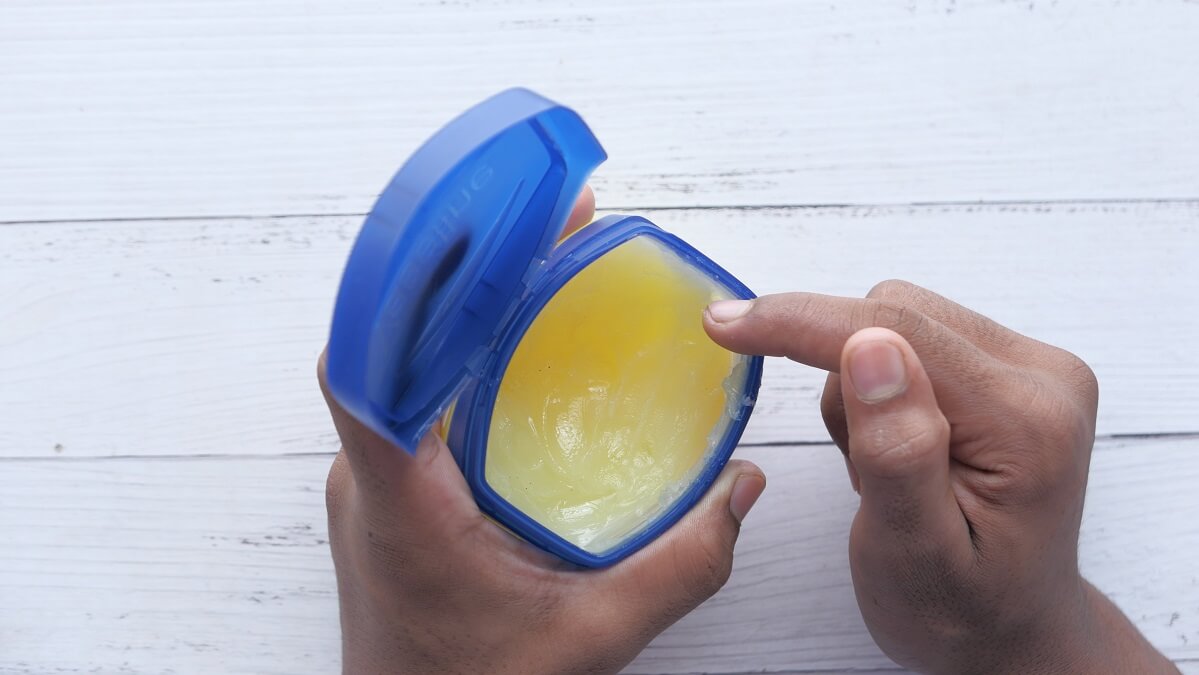Take a peek inside any medicine cabinet and you’re likely to find a small jar of Vaseline nestled among the various tubes and packets.
Vaseline is a popular brand of petroleum jelly that was created more than 160 years ago. It’s a mixture of minerals and waxes that are easily spreadable, with petroleum being the main ingredient.
You may be more familiar with other petroleum by-products, such as kerosene and gasoline. Just like those products, petroleum jelly has a slick and filmy consistency.
But unlike other forms of petroleum, petroleum jelly is safe to use on your skin and hands and is often used as a healing balm and ointment for burns and chafed skin.
Here are some other uses for petroleum jelly.
Helps to heal wounds
Dermatologists are often fans of petroleum jelly as it seals water into your skin. This is great for wounds as they heal quickest in a moist environment; it may take up to twice as long for dry injured skin to repair.
The oil and moisture may also dull the redness of a new scar and help to prevent infection.
It won’t burn or sting when you apply it, making it especially good for children.
Prevents windburn
Rub a thin layer of petroleum jelly to the parts of your face that will be exposed to the cold wind. You can also dab a little under your nose if it gets dry.
You may want to avoid areas that are acne prone as it can trap bacteria and oil in your skin, potentially worsening breakouts.
Relief for psoriasis
Psoriasis outbreaks are more likely to happen if your skin is dry. Applying petroleum jelly in areas where you often see psoriasis symptoms is a good proactive measure.
Read: What causes common skin conditions?
If your skin gets really dry, it could crack and let in bacteria. Petroleum jelly can ease inflammation and keep your skin moist without irritating it, this usually means you’ll scratch less too.
Kills headlice (but not the eggs)
You may have heard of petroleum jelly as a home remedy for lice. Research shows it may kill adult lice, but it doesn’t keep the eggs from hatching. That means it’s not a good way to control lice. You should use a specific medicated shampoo to eradicate the headlice.
Nail moisturiser
Petroleum jelly can hydrate all parts of your hands, including your nails.
If your nails are brittle, it can help fill in and smooth out some of the ridges and rough spots. If you get manicures a lot, you may want to dab some on after your next session. But make sure your nails are still a little damp first to seal in the water.
Prepares skin for perfume
Moisturised skin may hold scents better, so rub some petroleum jelly on your pulse points before you spritz to make your fragrance last longer. Pulse points are warm areas that help diffuse the fragrance across the body, they include the wrists, inner elbows, back of the knees, and the neck.
DIY lip scrub
Add a bit of sugar to petroleum jelly to make your own lip scrub. Or mix it with sea salt and use the mixture in the shower as a body scrub with moisturising benefits.
Prevents skin stains from hair dye and nail polish
Apply petroleum jelly along your hairline to prevent hair dye staining your skin. This also works if you like to paint your nails at home. A barrier of petroleum jelly is easy to wipe away when you’re done.
Prevents blisters
Before you head out for a run, rub some petroleum jelly between your legs or on your heels. It may keep you from chafing in areas that rub together. If you do get a blister, petroleum jelly on the sore can help it heal.
Read: Suffering from dry, cracked heels? Here’s what to do
Helps haemorrhoids
Petroleum jelly may help you feel better if you have a flare. Putting a thin layer inside your anal area can protect sensitive skin and may help it itch less too.
Prevents razor blades from rusting
Keep your razors like new by smoothing a very thin layer of petroleum jelly onto the blades between uses. Make sure they’re completely dry first to prevent rust.
Prevents nail polish bottles from sticking
A dab of petroleum jelly under the cap of your nail polish can prevent dried lacquer from making the bottle impossible to open.
Things to avoid
Greasiness
A little petroleum jelly goes a long way.
It’s safe to use even on oily skin; but the heavy, greasy feeling may not be what you’re aiming for with your skincare routine, especially if you have combination oily or extremely oily skin.
Read: Stop winter from weathering your skin
Stains
Oil-based products may stain fabric or carpet, so if you’re using it to moisturise hands or feet, pop socks or gloves on afterwards.
Don’t put it on new sunburn
Oil-based products can keep heat inside your skin, so it’s better to reach for an aloe vera or soy-based product instead.
Don’t use it for sex
Petroleum jelly could cause latex condoms to break. If you’re female, it might raise your chances of getting bacterial vaginosis. Try a water-based option instead.
For most people, petroleum jelly is a safe and cost-effective way to lock moisture into skin, but it does come from a fossil fuel. If you’d like a natural choice, try pure shea butter, cocoa butter, or cold-pressed coconut oil. They may not stay on as well, but they’ll keep your skin moist.
Do you have a tub of Vaseline sitting around at home? What do you use it for?

